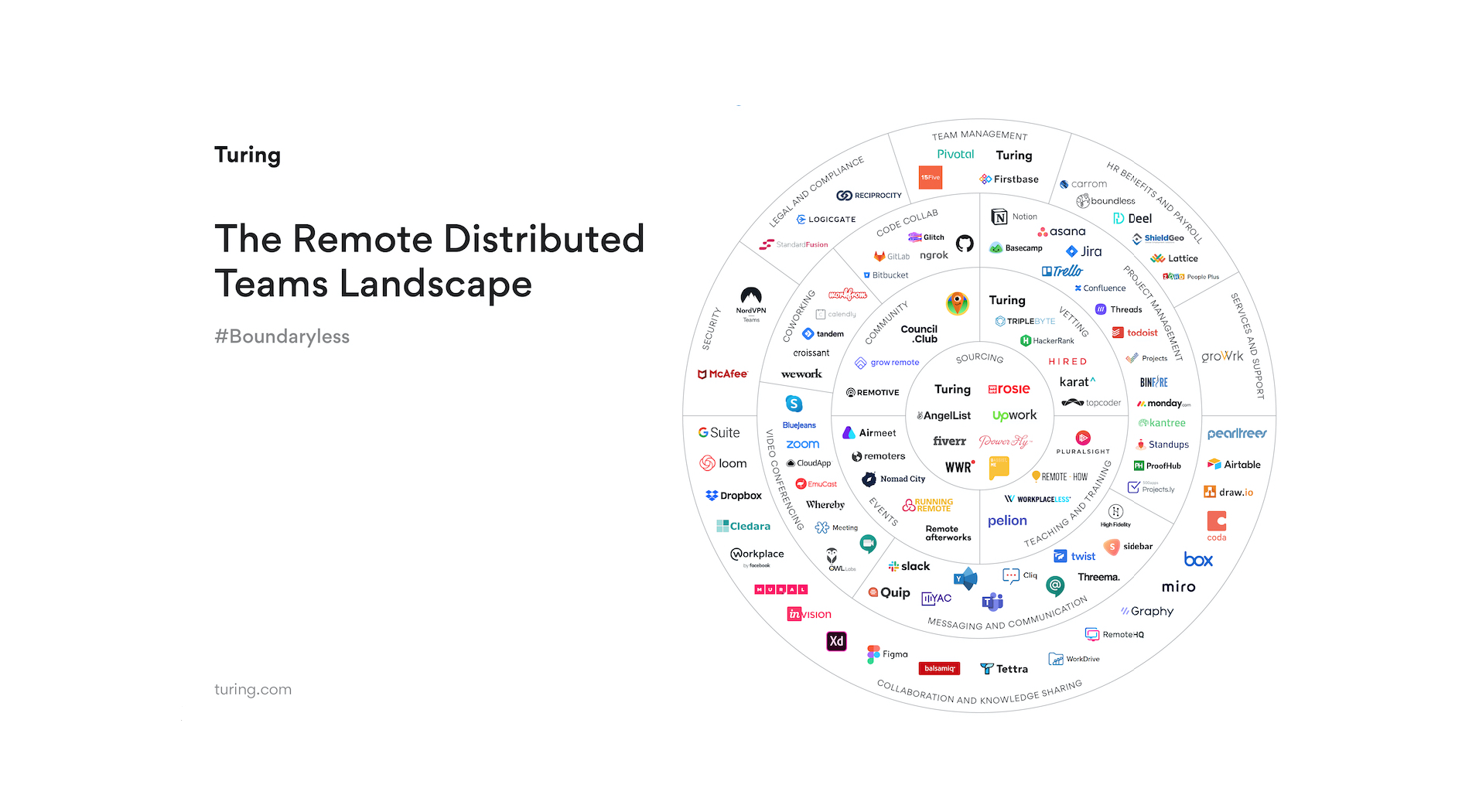Why a Landscape of Remote-Work Tools is Better Than One “Super-App”
On November 22, Forbes published an article titled The Most Exciting Tech Trends For 2020, From Five Leading Investors Around The World.
One of the contributors was the highly-esteemed Sarah Smith, Investing Partner at Bain Capital Ventures. Her interesting take on tech trends pertained to remote teams changing how we interact and which tools we need for workforce productivity. To quote her:
“As more and more tech leaders are facing a talent shortage in the U.S., they are building teams remotely. As a result, many of them are starting companies to enable better experiences for remote teams focused on productivity and communication. There are a plethora of tools popping up aiming to be the next generation of Slack, Zoom, and note apps like Quip and Evernote.”
“I believe the way leaders, managers, teams, and all employees interact and work is changing quite rapidly, but it is not yet clear if one super-app will stitch together everything a remote team needs or if we’ll deploy even more apps than before. More importantly, I’m keen to find tools the create the trust, empathy, and companionship that inherently comes with in-person interactions which are mostly lost in a fully remote working world.”
Sarah’s thought of one super-app that stitches it all together is an intriguing one, and I tried imagining such a tool for a moment. (I also imagined the glitches in its first release!)
But then I started thinking of the benefits to the current array of remote-work tools available. Three come to mind.
More tools enable more/better features. First, no matter how super a super-app would be, it’s unimaginable that it could provide all the features and uses provided by the current remote-enabling tools listed in the Boundaryless landscape (above).
More tools satisfy diverse teams. Second, the multitude of apps on the market reflects the beautiful diversity that remote work makes possible. One of the most significant benefits of remote work is that it enables companies – even the littlest ones – to employ incredibly diverse teams of professionals from around the globe. Diverse teams need to experiment with an array of tools. It’s unlikely any single app, no matter how tremendous, can satisfy the unique requirements of every organization.
An entire landscape of tools promotes innovation.

At Turing, we believe that innovation is an inherent good. It pushes humanity forward by promoting competition and a cycle of continuous improvement. To support this cycle as well as the ecosystem of #Boundaryless companies, we’ll continue to update the landscape whenever we learn about new companies that are helping to push the state of remote, distributed teams forward.
You can click here to read more about a few remote tools that we think your organization could benefit from if you work in remote setups.
Tell us the skills you need and we'll find the best developer for you in days, not weeks.











